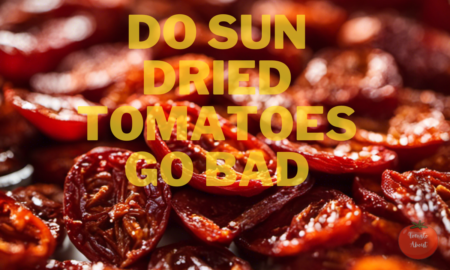For backyard gardeners, juicy, vine-ripened tomatoes are one of summer’s greatest pleasures. As you make plans for this year’s crop, a key decision awaits – should you grow determinate or indeterminate varieties?
Understanding the differences between these two tomato types will allow you to pick the one best suited to your gardening situation. Read on for an in-depth look at determinate vs. indeterminate tomato varieties!
An Overview of Determinate vs. Indeterminate Tomatoes
Determinate Tomatoes: The Bush Type
Determinate, or “bush” tomatoes, are known for growing to a compact, uniform size. These plants reach a genetically predetermined height, generally maxing out around 3-4 feet tall and 1-2 feet wide.
Once determinate tomatoes start flowering, they begin setting and ripening all their fruit around the same time, typically over a 2-3 week period. After this main harvest, determinate tomato plants slow down production dramatically or stop altogether. Some gardeners refer to this as the plants “shutting down.”
Since they have a defined endpoint to growth, determinate tomatoes do well in containers and confined garden spaces. They also don’t require pruning or staking for support. Determinate varieties are prized for canning and preserving since they produce a large quantity of fruit all at once.
Popular determinate tomato varieties include:
- Roma: Excellent for sauces and paste
- Celebrity: Disease resistance, all-around performer
- Mountain Spring: Early harvests
- Bush Beefsteak: Large slicing tomatoes
The Pros and Cons of Determinate Tomatoes
Pros
- Tend to be more compact and manageable in size, making them a good option for smaller gardens and growing in containers.
- Produce a large burst of fruit within a short window, which is great if you want to can or freeze a bulk harvest for sauces and salsa.
- Require less pruning and staking since they stay short.
- Grow well in containers and raised beds.
Cons
- Have a shorter overall productive season. After the initial harvest, production slows way down or stops.
- It is not ideal if you want ripe tomatoes for an extended period.
- Tend to be more prone to disease since all fruit ripens at once, creating more humidity in the plant canopy.
- Don’t produce as many total tomatoes per plant over the course of a season compared to indeterminates.
So in summary, determinate varieties shine for gardens with limited space, or if you need a big harvest within a short window for canning and preserving. But they won’t keep you in fresh tomatoes for months on end.
Indeterminate Tomatoes: The Vining Type
Indeterminate tomatoes are the vining, sprawling tomato plants that keep growing and producing fruit all season until killed by frost. Unlike determinate types, indeterminate tomatoes don’t have a predetermined size and can reach 5-12 feet tall or more if supported properly.
Indeterminate tomato plants set flowers and fruit steadily throughout the season. They produce tomatoes gradually over an extended period, with ripe tomatoes, green tomatoes, and flowers on the vines at the same time. Gardeners rely on indeterminate varieties for fresh slicing tomatoes all summer long.
Since they grow so large, indeterminate tomatoes require staking, caging, or trellising to support their growth habit. They also benefit from pruning to keep growth under control and improve air circulation.
Popular indeterminate tomato varieties include:
- Brandywine: Heirloom with incredible flavor
- Cherokee Purple: Unique color, rich taste
- mortgage Lifter: Huge, meaty fruits
- Sungold: Sweet, golden cherry-type.
The Pros and Cons of Indeterminate Tomatoes
Pros
- Produce ripening fruit all season long, keeping you supplied with tomatoes for an extended harvest.
- Generate higher total yields per plant since they continue growing and fruiting.
- Less prone to disease problems since ripe fruit isn’t clustered all at once.
- Great for providing a steady supply of slicing tomatoes for sandwiches and salads.
- More fun to grow since the vines and fruit keep developing.
Cons
- Requires more space since plants grow quite large.
- Need sturdy staking, caging, or trellising to support the tall vines.
- Benefit from more pruning to control growth and direct energy toward fruit production.
- Not ideal if you need a big batch of tomatoes for canning or sauce-making.
- More susceptible to late blight since foliage stays active longer into cool, damp fall weather.
Overall, indeterminates are your best bet for the longest harvest potential per plant. But they require more room, pruning, and support compared to determinates.
Growing Tips for Determinate Tomatoes
If you decide to grow determinate tomatoes, here are some tips for success:
- Choose compact varieties that max out under 4 feet tall. Some good determinate cultivars include Celebrity, Mountain Spring, and Roma.
- Give each plant at least 4-5 square feet of space in the garden. Crowding causes disease and small fruit.
- Add stakes or cages for support once plants are 1-2 feet tall. This prevents broken branches.
- Prune out the suckers (branches that form between the main stem and leaf sets). This isn’t mandatory, but improves air circulation and directs energy to fruit rather than leaf growth.
- Add a 2-3 inch layer of mulch around plants to conserve moisture and discourage weeds. Replenish as needed.
- Water deeply 1-2 times per week depending on weather. Consistent moisture produces the best harvest.
- Once flowers appear, apply a balanced fertilizer every 2-3 weeks to fuel fruit development.
- Harvest frequently once tomatoes start to ripen. This stimulates further production.
Follow these tips, and your determinate tomatoes will reward you with a bumper crop of plump, flavorful tomatoes!
Growing Tips for Indeterminate Tomatoes
Indeterminate tomatoes require a bit different care to maximize their lengthy harvest potential:
- Select vigorous varieties like Brandywine, Mortgage Lifter, or Amish Paste. They’ll need space to stretch out!
- Give each plant at least 6-8 square feet of garden space. Anything less cramped their growth.
- Install 5-7-foot stakes or cages at planting time to support the vines. Sturdy support prevents toppling.
- Pinch off suckers weekly to encourage a single-stemmed plant. This forces energy into fewer fruits.
- Prune back top growth above the top-most fruit cluster by 1/3 around mid-summer. This redirects energy to ripening fruit lower on the plant.
- Apply 2-3 inches of mulch to conserve moisture and deter weeds. Replenish as needed.
- Irrigate 1-2 inches per week with drip irrigation or soaker hoses. Consistent water = tastier tomatoes!
- Fertilize every 2-3 weeks with a tomato fertilizer once flowering starts. This fuels expanded fruit production.
- Harvest ripe tomatoes frequently to stimulate the plant to keep flowering and fruiting until frost.
Should You Grow Determinate or Indeterminate Tomatoes?
When deciding between determinate and indeterminate tomatoes, there are three key factors to weigh: available space, desired harvest timing, and planned uses.
Space:
- Container gardening or small beds – Determinate tomatoes are a clear choice, as their compact growth habit suits confined areas. Indeterminate tomato vines can overwhelm a small garden quickly.
- Medium to large garden beds – Either type may work here. Indeterminate tomatoes produce more overall but require trellising and pruning. Determinate plants are simpler to grow but yield less per plant.
Harvest timing:
- All fruit at once for canning/preserving – Determinate tomatoes are perfect, ripening in a couple of weeks.
- A steady supply of slicing tomatoes – Go for indeterminate types that fruit steadily for months.
- Extend season into fall – Start determinate first for an early crop, then follow with indeterminates that keep producing as the weather cools.
Planned uses:
- Salsa, sauces, paste – Determinate Roma types excel for thicker flesh and meatiness.
- Fresh salads, sandwiches, snacking – Choose indeterminate slicing tomatoes like Beefsteaks for juicy flavor.
- A bit of both – Plant some of each! Cherokee Purple makes tasty sauces and fresh eating.
My personal tried and true Tomato Tips
Over a decade of growing tomatoes, I’ve found these techniques boost my tomato success each year:
- Choose disease-resistant varieties when possible – I’ve had great luck with Celebrity determinate and Brandywine indeterminate types.
- Start seeds indoors for a hearty transplant – My plants get a great head start in a sunny window instead of buying transplants.
- Use Wall O Water plant protectors to extend the spring season – These let me get tomatoes out weeks before the last frost with no cold damage.
- Add mycorrhizal fungi to the planting holes – I sprinkle this in at transplanting for stronger root systems and bigger plants.
- Use soaker hoses for watering – Much less disease than overhead watering. I run these 1-2 times a week depending on heat.
- Mulch heavily with shredded leaves each year – Keeps weeds down and moisture in during hot, dry spells in summer.
- Monitor for hornworms and early blight – These are the usual suspects attacking my tomatoes. I hand-pick hornworms and use Serenade fungicide at the first sign of blight.
The Final Decision: Determinate or Indeterminate?
I hope these tips help explain the key differences between determinate and indeterminate tomatoes. When choosing varieties for your garden, consider your unique needs and growing conditions.
Small space gardeners will do best with determinate bush types requiring little maintenance. For maximum tomato harvest from mid-summer onward, go with vining indeterminate plants supported by cages or trellises. Or plant some of both for early and late crops!
With the right tomato varieties matched to your gardening situation, you’ll be rewarded with a bountiful harvest of juicy, flavorful tomatoes. Get those seeds started and enjoy your best tomato crop yet!


